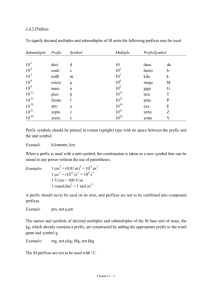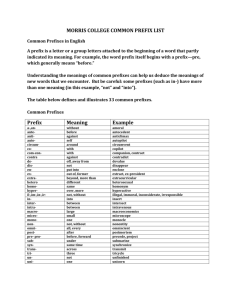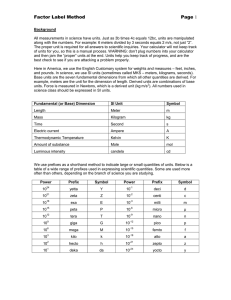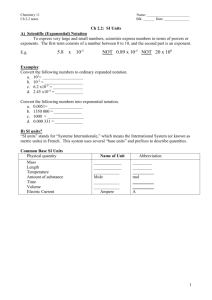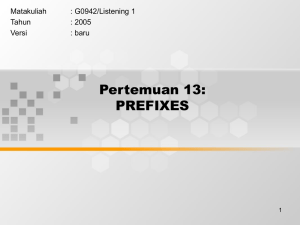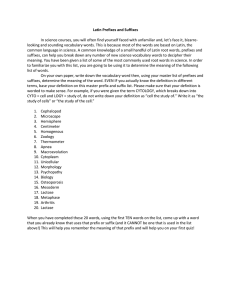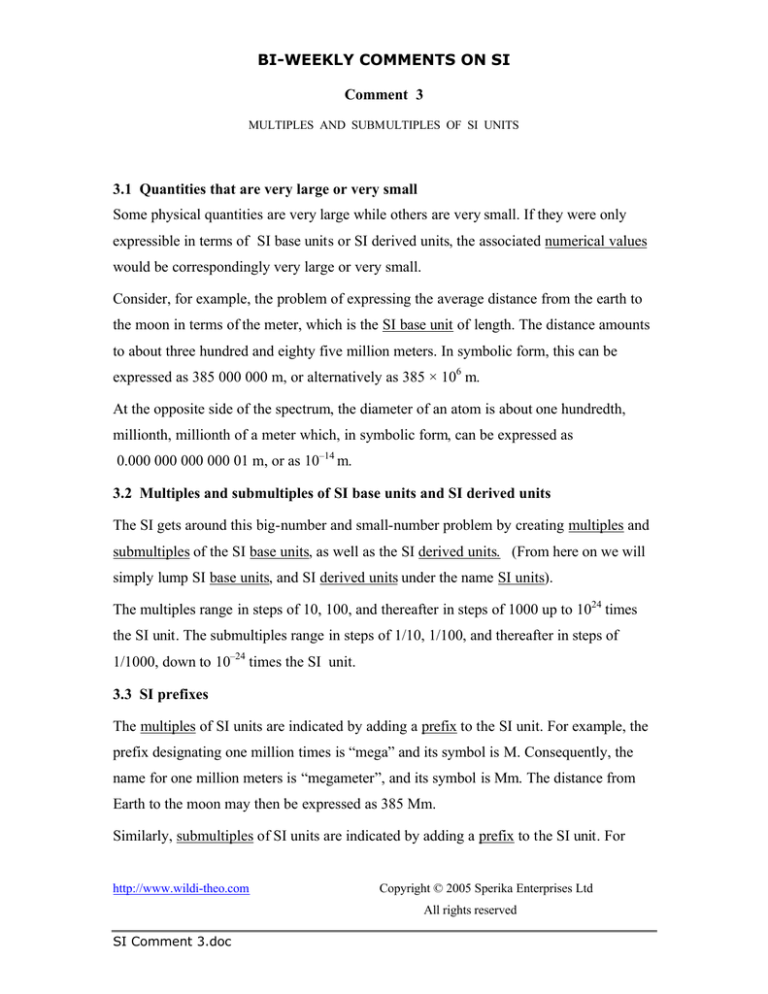
BI-WEEKLY COMMENTS ON SI
Comment 3
MULTIPLES AND SUBMULTIPLES OF SI UNITS
3.1 Quantities that are very large or very small
Some physical quantities are very large while others are very small. If they were only
expressible in terms of SI base units or SI derived units, the associated numerical values
would be correspondingly very large or very small.
Consider, for example, the problem of expressing the average distance from the earth to
the moon in terms of the meter, which is the SI base unit of length. The distance amounts
to about three hundred and eighty five million meters. In symbolic form, this can be
expressed as 385 000 000 m, or alternatively as 385 × 106 m.
At the opposite side of the spectrum, the diameter of an atom is about one hundredth,
millionth, millionth of a meter which, in symbolic form, can be expressed as
0.000 000 000 000 01 m, or as 10–14 m.
3.2 Multiples and submultiples of SI base units and SI derived units
The SI gets around this big-number and small-number problem by creating multiples and
submultiples of the SI base units, as well as the SI derived units. (From here on we will
simply lump SI base units, and SI derived units under the name SI units).
The multiples range in steps of 10, 100, and thereafter in steps of 1000 up to 1024 times
the SI unit. The submultiples range in steps of 1/10, 1/100, and thereafter in steps of
1/1000, down to 10–24 times the SI unit.
3.3 SI prefixes
The multiples of SI units are indicated by adding a prefix to the SI unit. For example, the
prefix designating one million times is “mega” and its symbol is M. Consequently, the
name for one million meters is “megameter”, and its symbol is Mm. The distance from
Earth to the moon may then be expressed as 385 Mm.
Similarly, submultiples of SI units are indicated by adding a prefix to the SI unit. For
http://www.wildi-theo.com
Copyright © 2005 Sperika Enterprises Ltd
All rights reserved
SI Comment 3.doc
example, the prefix designating one millionth is “micro” and its symbol is the Greek
letter µ. Consequently, 15 millionths of a meter, in symbolic form, becomes 15 µm.
The Wildi SI Chart titled ⊗SI PREFIXES displays the entire range of SI prefixes, along
with their names, symbols and multiplying factors. Using this prefix chart, and searching
for an appropriate SI prefix, the approximate diameter of an atom (10–14 m) can be
expressed as 10 × 10–15 m which is ten femtometers, or 10 fm in symbolic form.
3.4 Important note on prefixes
As an important side issue, SI prefixes are always written in upright form (never italic).
Also, they are directly incorporated into the SI unit (no space between the prefix and the
SI unit). Only one prefix is attachable to an SI unit. Two prefixes are NOT allowed.
For example, even though the base unit of mass is the kilogram, the term millikilogram
for 1/1000 of a kilogram is not allowed. The correct term for one thousandth of a
kilogram is gram.
3.3 Just for fun – try this SI quiz
Using the Wildi SI Charts, express the quantities listed in the the following table in
symbol form. Remember that double prefixes are never allowed.
A
B
C
1
14 petameters
0.23 nanometers
15 millikelvins
2
234 milligrams
15.2 picofarads
135 kilometers per hour
3
4.2 attojoules
17 cubic meters per second
24 kilovolts
0.34 micrometers
9.4 zettameters
4 5 million kilograms
The A1 to C4 solutions are given below. For example, the solution to B3 is 17 m3/s.
But don’t look until you’ve tried to discover the appropriate symbols by yourself.
⊗ SOLUTIONS
http://www.wildi-theo.com
Copyright © 2005 Sperika Enterprises Ltd
All rights reserved
SI Comment 3.doc
THAT’S ALL FOR NOW FOLKS!
SEE YOU IN TWO WEEKS !
NIST-7 is the cesium-beam primary frequency standard for the United States. At an accuracy of 1
–14
× 10 , this standard contributes significantly to the accuracy of the rate of international time and
lends long-term stability to NIST’s time scale. The standard also serves as a reference in
evaluating the performance of advanced commercial frequency standards. (Courtesy of NIST, the
National Institute of Standards and Technology)
http://www.wildi-theo.com
Copyright © 2005 Sperika Enterprises Ltd
All rights reserved
SI Comment 3.doc

